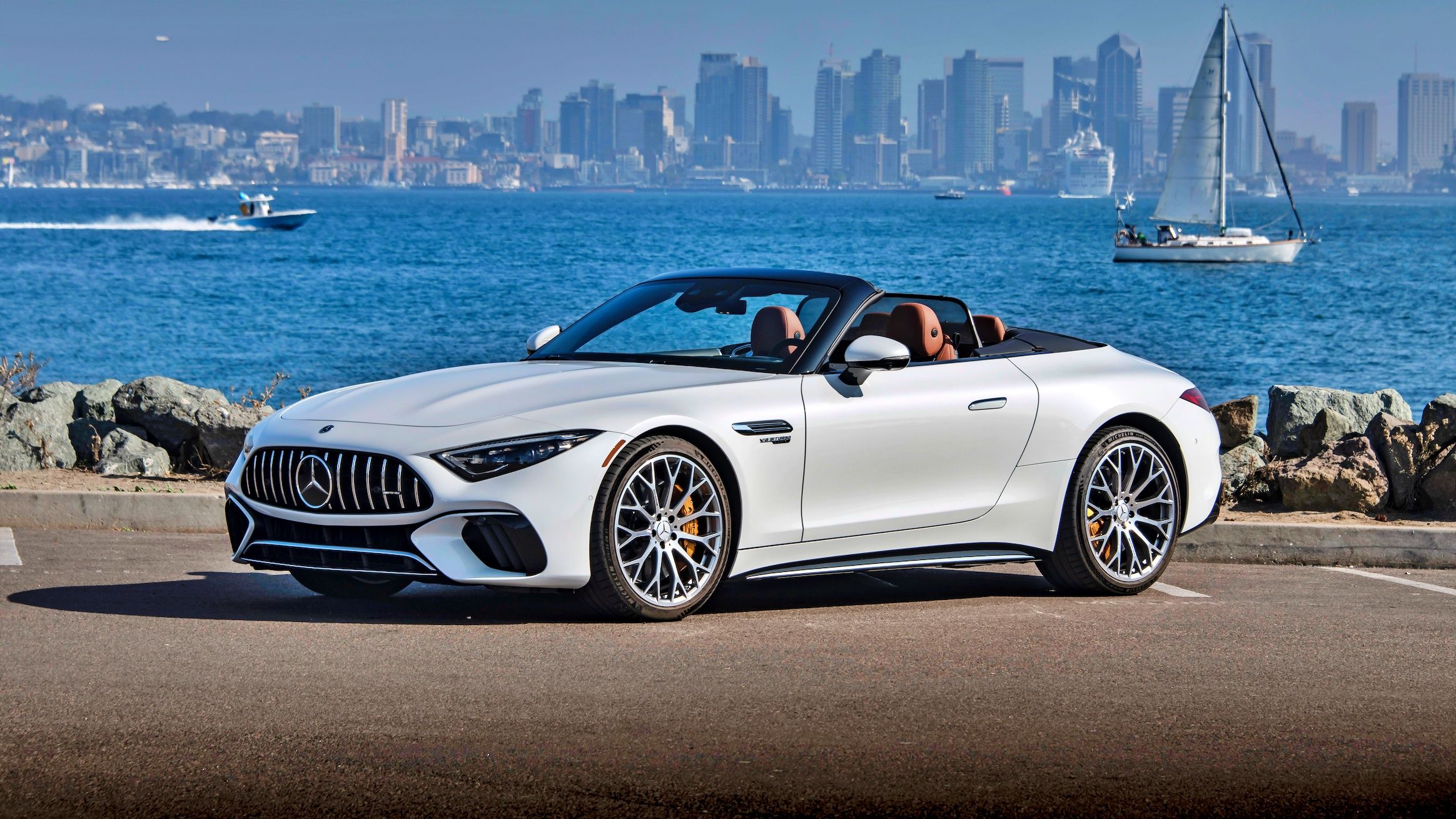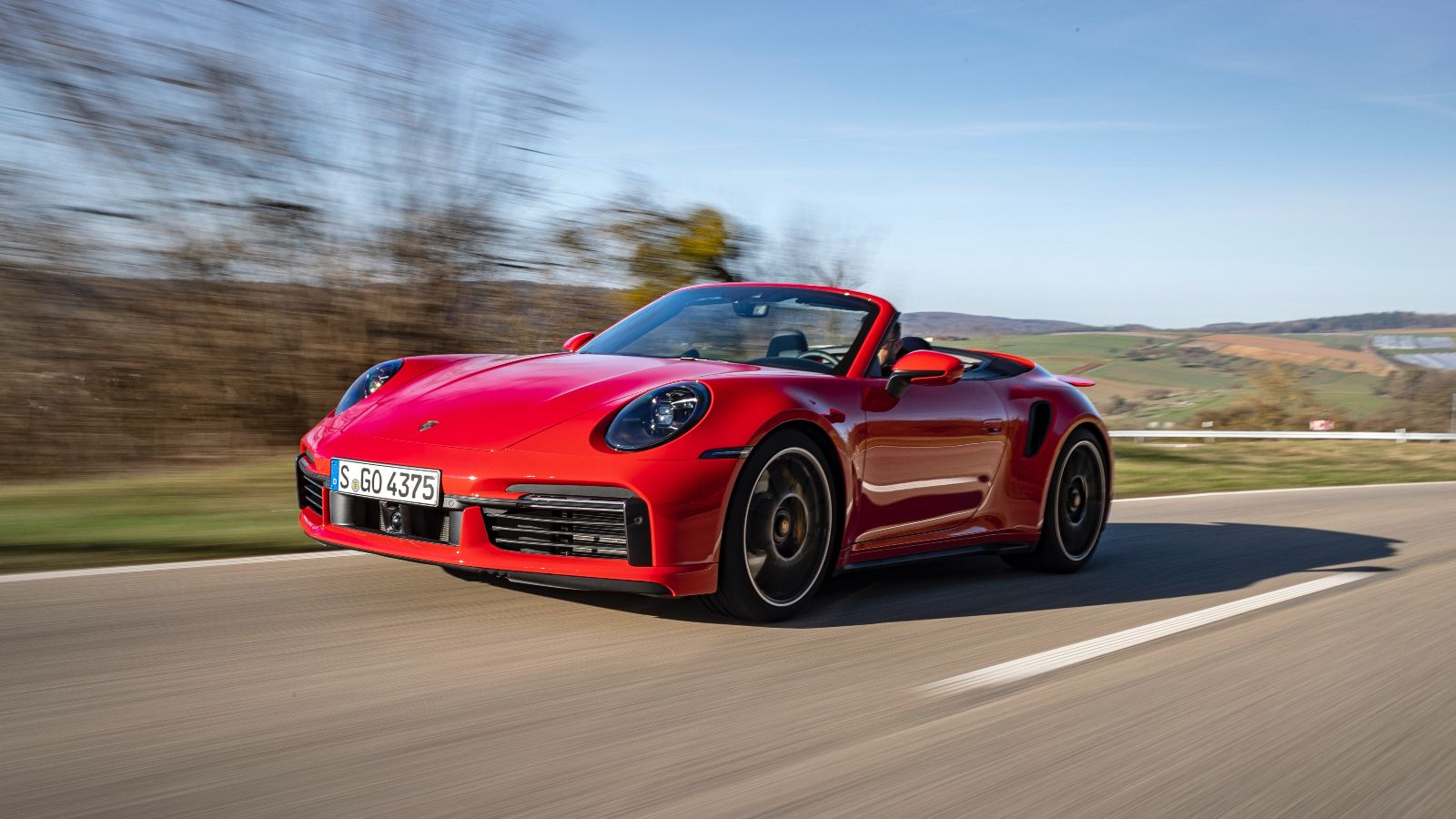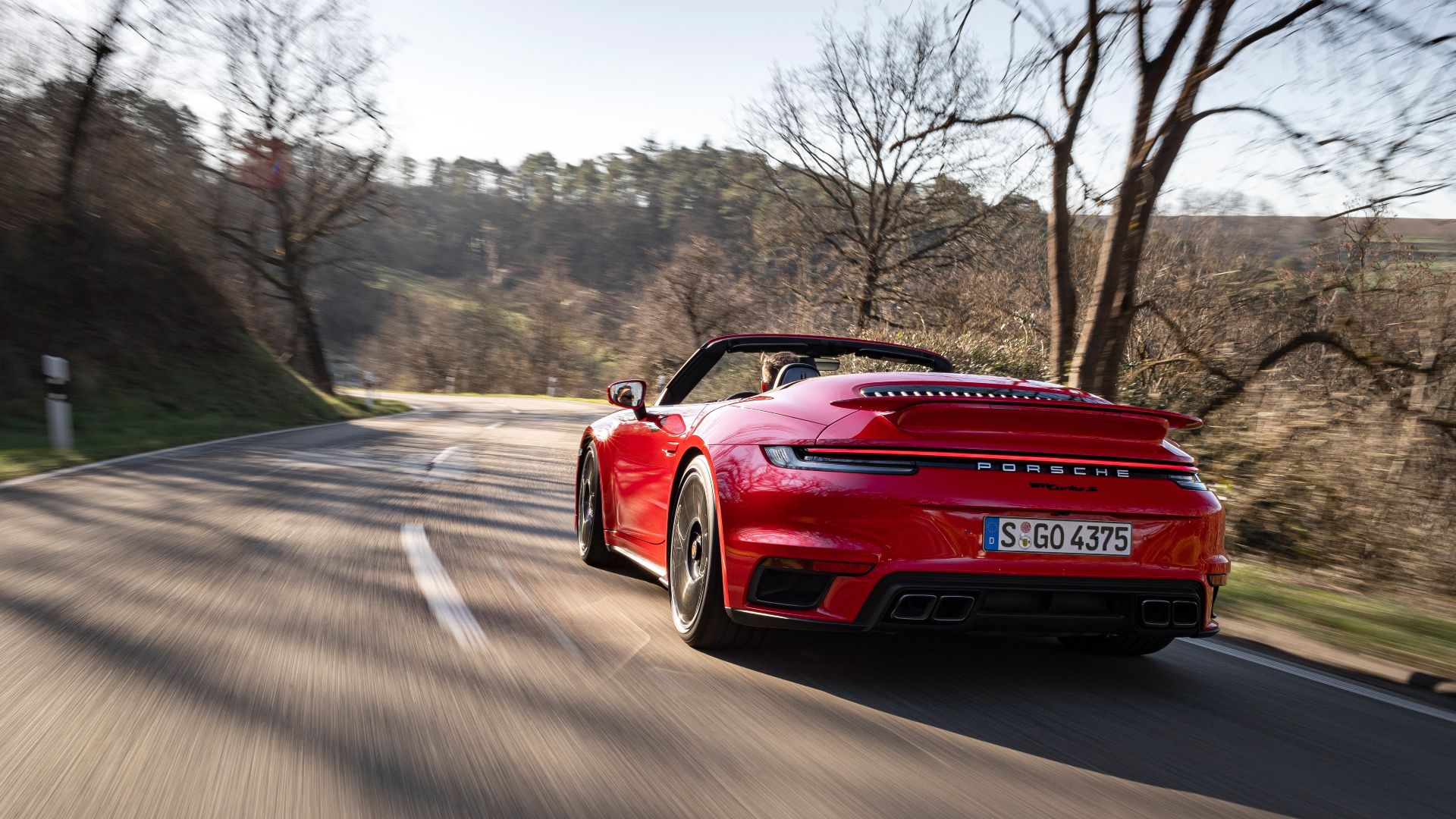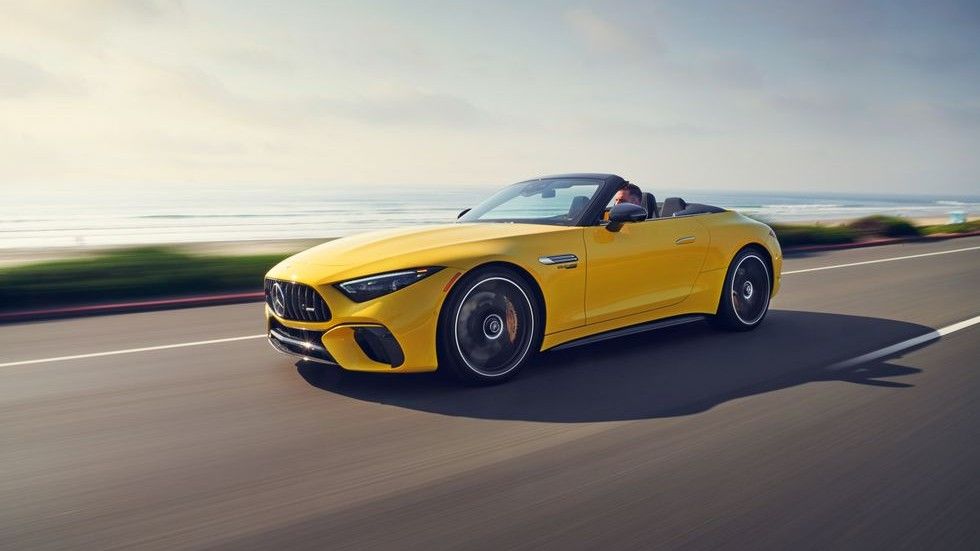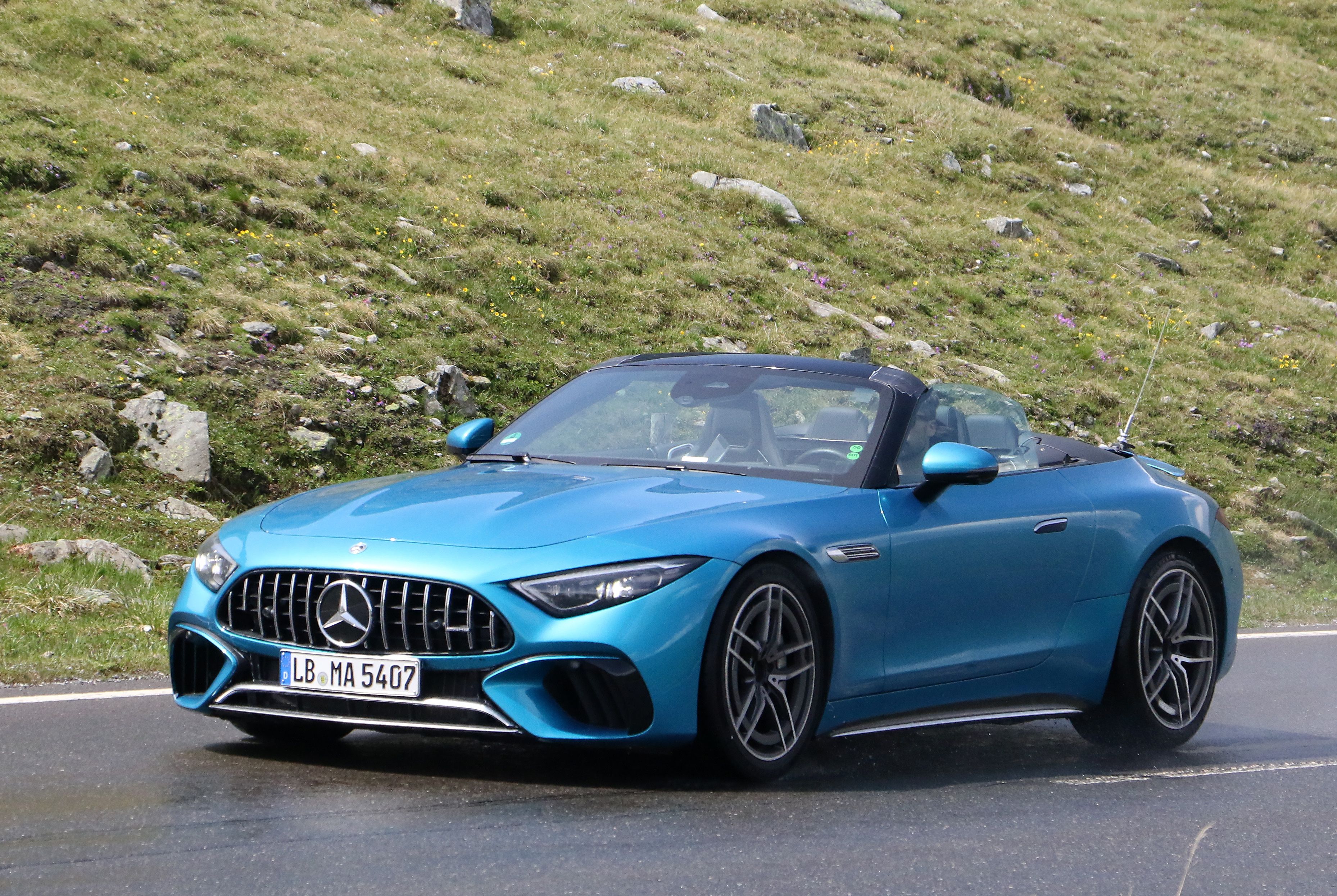Mercedes has a long line of luxurious, sports coupes. The Mercedes SL is the most notable of the brand’s models as the nameplate dates back to 1954 with the 190 SL W121 and 300 SL W198 models. Over the years, the model has evolved, and eventually, it transformed into a heavyweight luxury convertible with massive power.
The 2022 Mercedes AMG SL changed things up, by being the first SL developed by AMG. This means that while the luxury GT aspect still remains, the 2022 model is the sportiest SL yet. This is a problem since it automatically makes the AMG SL a rival to the Porsche 911. The range-topping AMG SL63, in particular, has the unenviable task of competing with the 911 Turbo S, which is considered the benchmark for a usable, high-performance car.
The Weight Advantage
One of the reasons the Porsche 911 has always been an example of a peak sports car is that it stayed true to the lightweight, rear-engine, sports car formula. The Mercedes SL has always gravitated more towards the luxury spectrum of sports cars, eventually becoming a true GT. As a result, the Porsche 911 Turbo is a much lighter vehicle at 3,615 pounds (1,640 kg).
In comparison, the lightest version of the Mercedes AMG SL tips the scales at 3,990 pounds (1,810 kg), and that’s while equipped with a 2.0-liter, turbocharged, inline-four engine. If you go for one of the V-8-powered versions, you are looking at a whopping 4,299 pounds (1,950 kg). Even in Cabriolet guise, the Turbo S still weighs significantly less at 3,770 pounds (1,710 kg).
Superior Performance
Although it doesn’t pain the whole story, it is easy to turn everything into a numbers game. In every measurable way, the Porsche 911 Turbo S is the superior performance car. The Porsche packs enough performance to run with some hypercars. In its quickest form – the Turbo S Lightweight – the current 992 generations manage a 0 to 60 mph (97 km/h) time of as little as 2.1 seconds with the quarter-mile blazing by at 9.9 seconds at 139 mph (224 km/h). Even the regular Turbo S manages a 2.6-second 0 to 60 mph (97 km/h) sprint.
As for the Mercedes AMG SL, you can currently get it in three guises. The base AMG43 is comparable to the 911 Carrera. However, the SL43 comes with a rear-wheel-drive only and an M139 engine, which it shares with the Mercedes-AMG A45 hot hatch. The range-topping AMG SL63 comes with 4MATIC, all-wheel drive, and the venerable 4.0-liter twin-turbo V-8. In here, it’s good for 585 horsepower and 590 pound-feet (800 Nm). This is down on power compared to the 992 Turbo S’ 3.7-liter, twin-turbo, flat-six, which packs 650 horsepower and 590 pound-feet (800 Nm). Both engines are technological marvels, but the AMG's only trump card against the 911 is the soundtrack.
With 3.4 seconds needed for the 0 to 60 mph (97 km/h) sprint, the SL63 falls behind the Porsche Turbo. The extra weight and softer setting of the Mercedes allow the Porsche to pull ahead in the corners, convincingly while the 911 Turbo’s PDK transmission is also the noticeably sportier system while still refined enough to serve exceptionally well at lower speeds.
Easier To Live With
As far as practicality goes, both the Mercedes AMG SL63 and Porsche 911 Turbo S are nearly identical. The most obvious difference stems from the engine position. The SL’s front-engine rear-wheel-drive layout means it has a proper trunk, which has a capacity of up to 8.48 cubic feet (240 liters). The Porsche 911’s rear-engine layout means it has a “frunk”, which has 4.52 cubic feet (128 liters) of luggage capacity.
Both vehicles feature rear seats, which are not ideal for adults and are best used as additional luggage space. Granted, the ones in the 911 Turbo S are slightly more usable when it comes to short-distance trips. As the AMG SL is a soft-top convertible, its logical competitor is the 911 Turbo S Cabriolet. The Porsche’s roof goes down in 12.0 seconds while the Mercedes’ needs nearly 15.0 seconds. However, the AMG SL can retract its roof at speeds of up to 37 mph (60 km/h) while the 911 can do it at speeds of up to 31 mph (50 km/h).
Maneuverability is one aspect the Mercedes AMG SL also falters behind the 911 Turbo S. Despite both cars featuring rear-wheel steering, the Mercedes’ turning circle is a whopping 12.8 meters compared to the Porsche’s much tighter, 10.9-meter turning circle. Both vehicles can be had with carbon-ceramic brakes although the Porsche’s are bigger – 16.5 inches front and 15.5 inches rear versus the Mercedes’ 15.4 inches front and 13.9 inches rear. While not the most important parameter when it comes to stopping power, the 911’s brakes offer better heat dissipation for longer periods.
2022 Mercedes AMG SL63 Price
If nothing else can decide towards which end of the scale your heart gravitates, the price might offer a solution. The 2022 Mercedes AMG SL63 starts at $179,150, which makes it more expensive than the fixed-head AMG GT it will eventually, fully replace. At $187,100, the Porsche 992 Turbo S is not that much more expensive. The Turbo S Cabriolet is nearly $13,000 more expensive than the fixed-head.
At the end of the day, numbers aren’t everything, however. Mercedes’ decision to wage war against the 911 could prove futile, but for those tired of the rear-engine model’s rule, there is now a worthy alternative with a heritage badge that can keep up in terms of bang for the buck.

